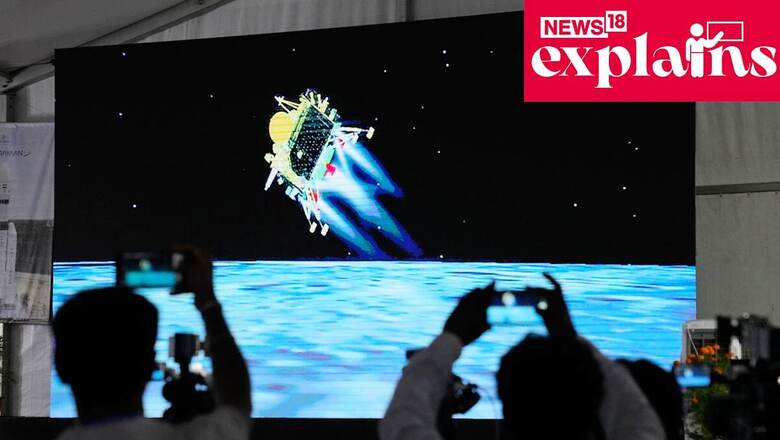
views
India became the first country to land a spacecraft, Chandrayaan-3, near the moon’s south pole on Wednesday — a historic voyage to uncharted territory that scientists believe could hold vital reserves of frozen water, and a technological triumph for the world’s most populous nation.
After a failed attempt to land on the moon in 2019, India now joins the United States, the Soviet Union and China as only the fourth country to achieve this milestone.
The lander Vikram with the rover Pragyan inside touched down on the lunar surface at 6:04 pm, sparking celebrations across India, including Bengaluru, where scientists of the Indian Space Research Organisation (ISRO) watching the landing erupted in cheers and applause.
Chandrayaan-3 is expected to remain functional for two weeks running a series of experiments, including a spectrometer analysis of the mineral composition of the lunar surface. But what happens to the lunar mission and its components after 14 Earth Days?
HOW LONG IS CHANDRAYAAN-3 MISSION LIFE?
Chandrayaan-3’s lander Vikram and rover Pragyan are solar-powered and have a mission life of one lunar day or around 14 Earth days during which sunlight, critical to the mission, is continuously available. The latest sunlight cycle on the moon began on August 23, which is why ISRO targeted this day for the soft landing.
After 14 Earth days, the sun sets on the moon for another cycle, during which temperatures on lunar surface plummet to minus-180° Celsius, rendering any tech frozen and unusable.
DATE WITH THE SUN ON MOON
To ensure the Chandrayaan-3 mission does not lose any sunlight, ISRO officials planned the landing at the start of the lunar day on August 23. Had the landing on Wednesday been unsuccessful, the space agency would have attempted another landing on August 24, Thursday, which would still mean sunlight on the moon. If for some reason that had failed too, the landing would have been postponed for 29 days to target a fresh lunar day.
WHAT WILL HAPPEN TO CHANDRAYAAN-3 AFTER 14 DAYS?
Chandrayaan-3 does have a mission life of one lunar day but ISRO officials have not ruled out the possibility of the lander Vikram and rover Pragyan coming to life for another lunar day.
According to ISRO Chairman S Somanath, as long as the sun shines, all systems will have its power.
“The moment the sun sets, everything will be in pitch darkness, temperature will go as down as low as minus-180 degree Celsius; so it is not possible for the systems to survive, and if it survives further, then we should be happy that once again it has come to life and we will be able to work on the system once again, and we hope like that to happen."
Will Chandrayaan-3 come back to Earth?
In either cases, none of the Chandrayaan-3 components will return to Earth. They shall remain on the moon.
The Rs 600 crore Chandrayaan-3 mission was launched on July 14 onboard Launch Vehicle Mark-III (LVM-3) rocket, for a 41-day voyage to reach near the lunar south pole. The successful soft-landing was achieved days after Russia’s Luna-25 spacecraft crashed into the moon after spinning out of control.
After landing, the module underwent internal checks and awaited sunrise at the designated landing site. The rover descended from the lander’s belly, onto the moon’s surface, using one of its side panels, which acted as a ramp.
Polar regions of the moon are a very different terrain due to the environment and the difficulties they present, therefore, have remained unexplored. All the previous spacecraft to have reached the moon landed in the equatorial region, a few degrees latitude north or south of the lunar equator.
The moon’s south pole region is also being explored because there could be a possibility of presence of water in permanently shadowed areas around it.




















Comments
0 comment